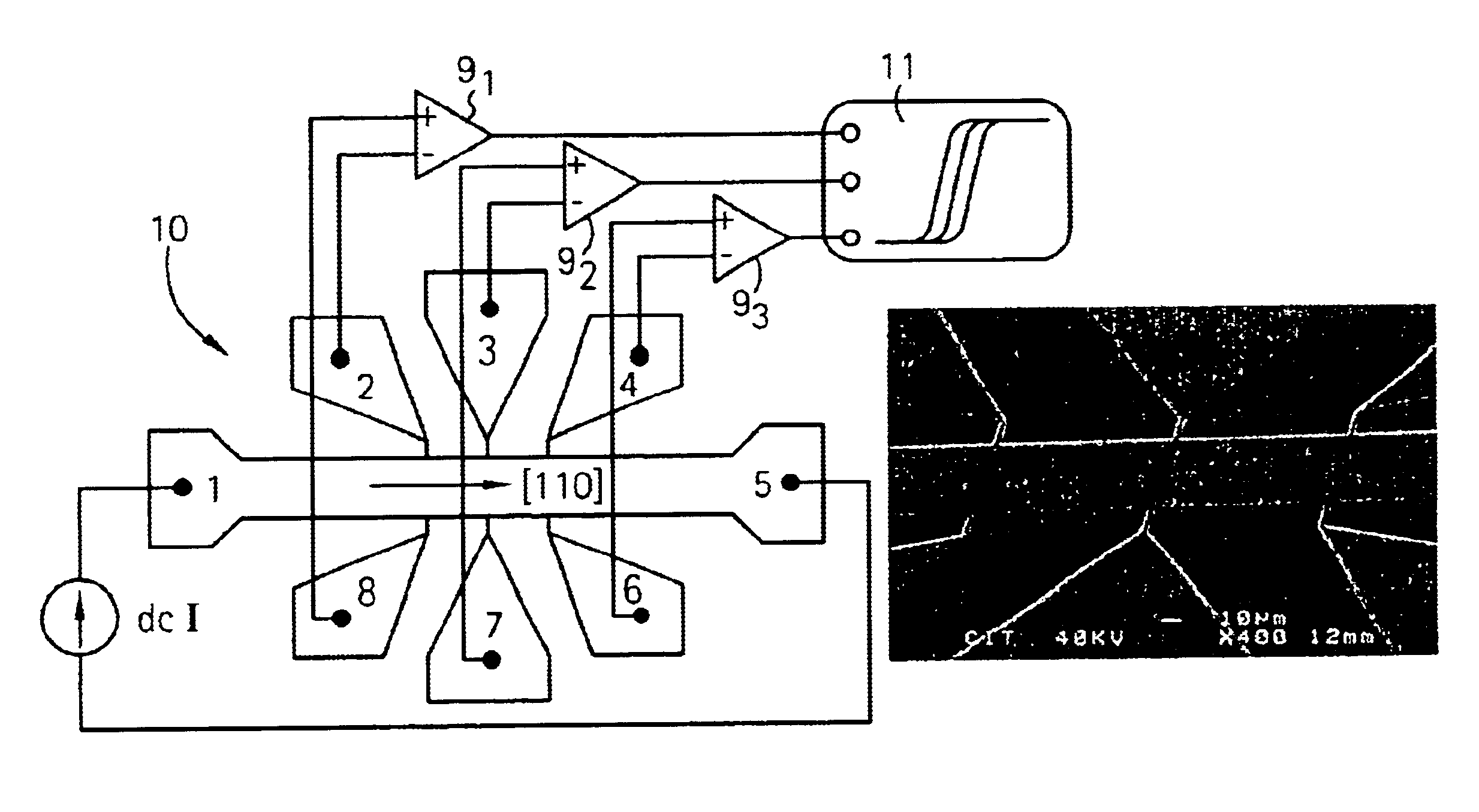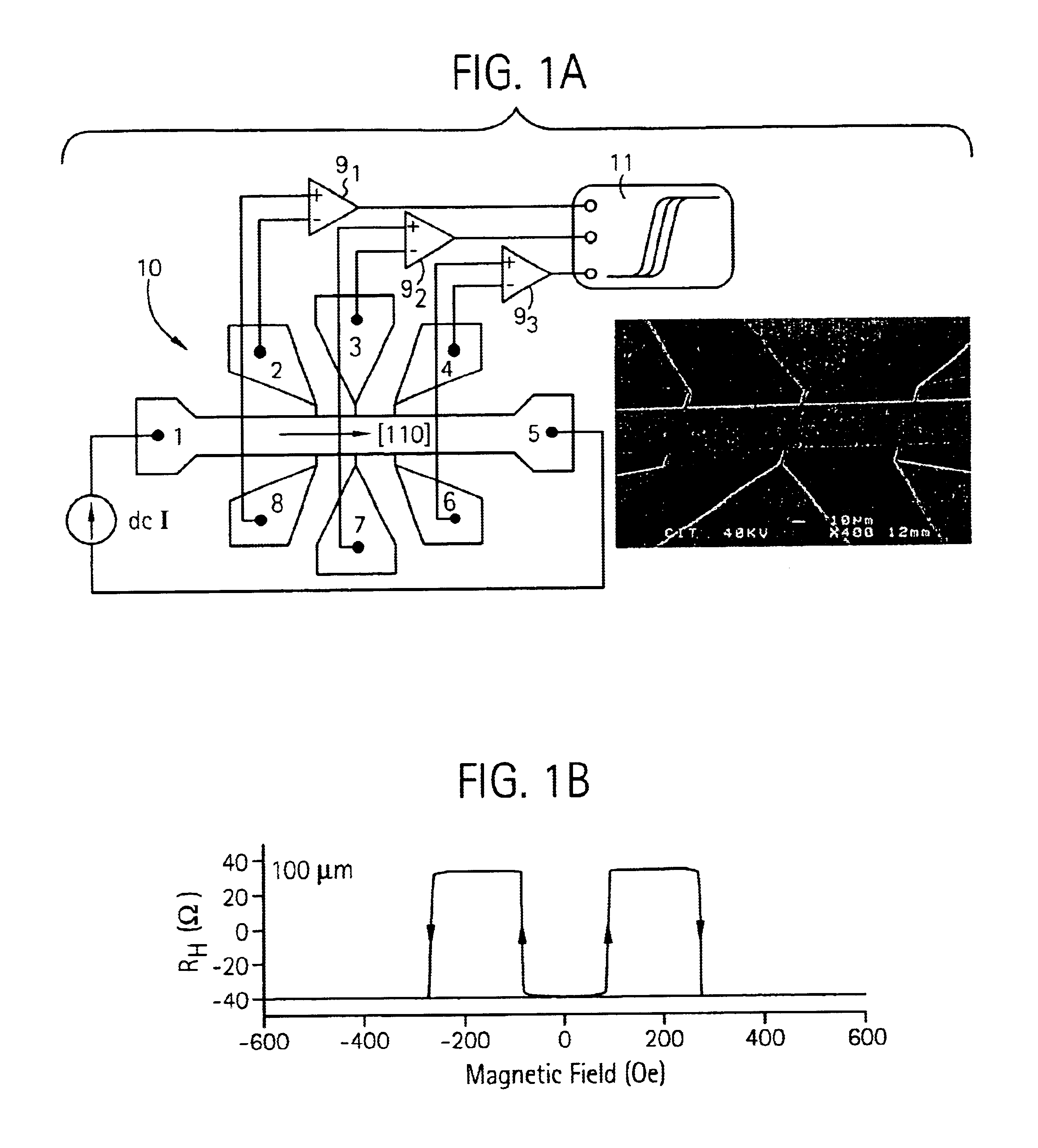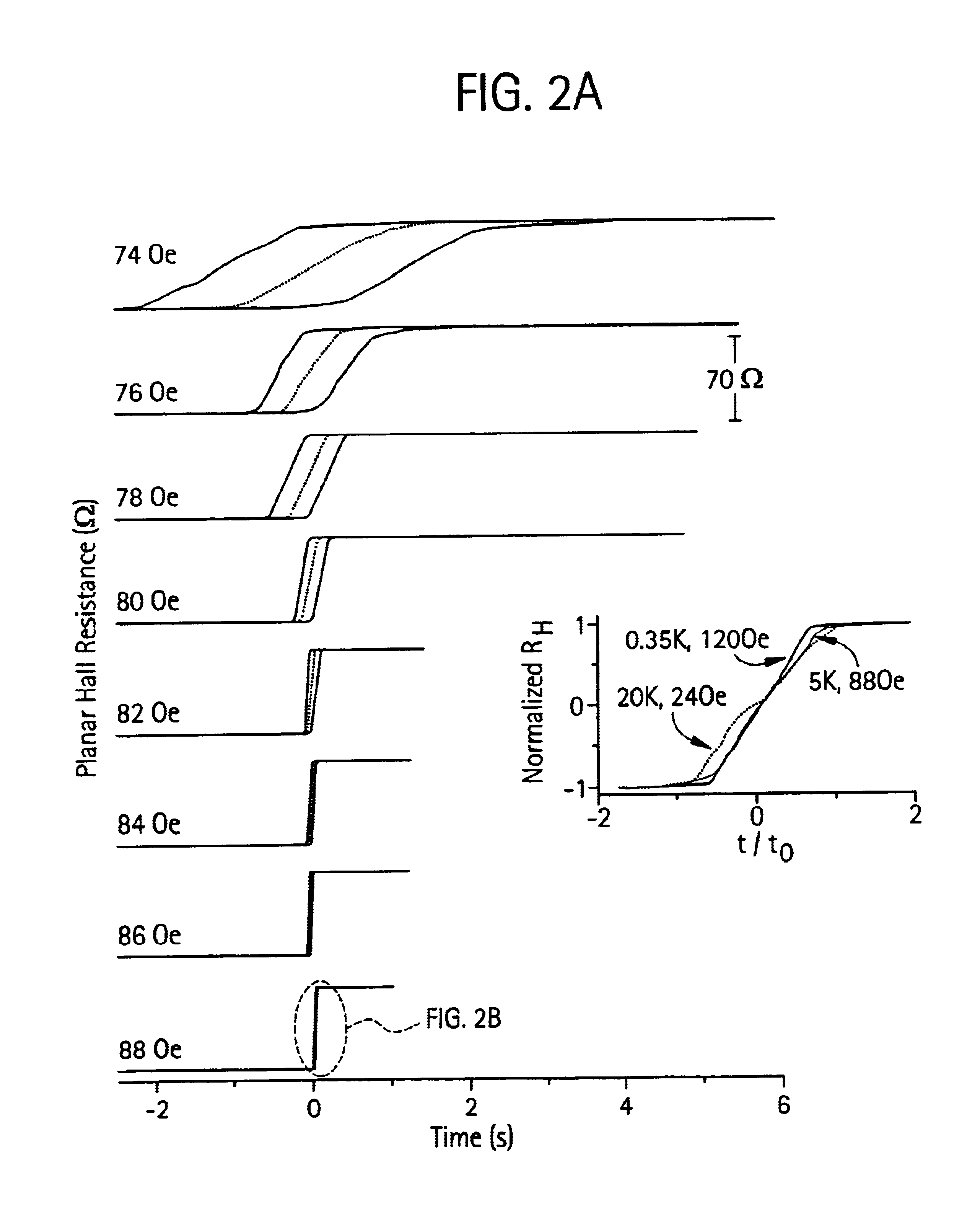Giant planar hall effect in epitaxial ferromagnetic semiconductor devices
a semiconductor device and ferromagnetic semiconductor technology, applied in the field of ferromagnetic semiconductor materials and ferromagnetic semiconductorbased devices, can solve the problems of complex electric-based approach, conflicting experimental results, and uncertainty in understanding the resistance of the domain wall of the devi
- Summary
- Abstract
- Description
- Claims
- Application Information
AI Technical Summary
Benefits of technology
Problems solved by technology
Method used
Image
Examples
Embodiment Construction
FIG. 1(a) shows a Hall device 10, including a measurement setup, according to an embodiment of the present invention. FIG. 1(a) also shows an electron micrograph of a typical Hall device 10. As shown, device 10 is arranged similar to a standard Hall bar having electrical contacts 1 and 5 positioned at opposite ends of the longitudinal axis (as shown, the [110] direction). Three pairs of transverse (Hall) voltage probes are provided. For example, probes 2 and 8 make up a pair, probes 3 and 7 make up another pair, and probes 4 and 6 make up the third pair. Although three sets of probes are shown, it is appreciated that two sets may be used or that more than three sets may be used in certain aspects.
Device 10 is preferably formed using a ferromagnetic based semiconductor material. In one embodiment, epilayers of (Ga, Mn)As are formed on a GaAs substrate and patterned to form the device. In one aspect, for example, device 10 is fabricated by growing a Ga1-xMnxAs epilayer, e.g., 150 nm-t...
PUM
 Login to View More
Login to View More Abstract
Description
Claims
Application Information
 Login to View More
Login to View More - R&D
- Intellectual Property
- Life Sciences
- Materials
- Tech Scout
- Unparalleled Data Quality
- Higher Quality Content
- 60% Fewer Hallucinations
Browse by: Latest US Patents, China's latest patents, Technical Efficacy Thesaurus, Application Domain, Technology Topic, Popular Technical Reports.
© 2025 PatSnap. All rights reserved.Legal|Privacy policy|Modern Slavery Act Transparency Statement|Sitemap|About US| Contact US: help@patsnap.com



